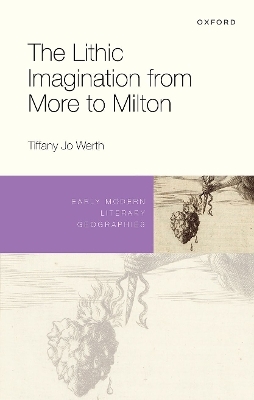
The Lithic Imagination from More to Milton
Oxford University Press (Verlag)
978-0-19-890396-3 (ISBN)
The Lithic Imagination from More to Milton explores how stones, rocks, and the broader
mineral realm play a vital role in early modern England's religious and cultural systems, a role that, in turn, informs the period's poetic and visual imagination. The scale of the human lifespan and the gyre-like turns of England's long Reformation provide a conceptual framework for the various stony textual and visual archives this book studies. The texts and images participate in specifically English histories (literary, artistic, political, religious) although Continental influences are frequently in dialogue. The religious orbit encompasses the Christian rivalry with Jewish culture, touches on Christianity's tension with Islam, but most intently centers on the antagonism between Catholic and variants of Protestant and Reformed belief.
The volume features canonical writers such as Shakespeare, Spenser, Donne, Wroth, Herbert, Milton and Pulter, but puts them in company with lesser-known religious polemicists, alchemists, anatomists, painters, mothers and stonemasons. Accordingly, the multimedia archive includes drama, lyric and prose as well as biblical illustrations, tapestries, church furniture, paintings, anatomical drawings and statues. The lithic too is capaciously construed as a continuum of rocky as well as mineral forms ranging from bodily encrustations like the kidney and bezoar stone, to salt, iron, limestone, marble, flint and silicon. The assemblage of materials bears witness to aspirational imperial fantasies and looming colonial conquests; it engages in both syncretism and supersession; upholds and subverts gender hierarchies; limns the race-making category of hue with desire; and supports, and sometimes thwarts, elitist ideologies of an elect, chosen people. All come together via the storied pathways of stone as densely material and as a foundation for the abstract imaginary along the scala naturae. Across the lithic-human fold, stone promises, fascinates, betrays. As alpha and omega, stone can herald salvation or it can threaten with damnation.
Tiffany Jo Werth (Ph.D. Columbia University) is an Professor of English at University of California, Davis. Her research interests include Renaissance literature, Reformation history, print culture, posthumanism, and the long history of environmental narratives. She is author of The Fabulous Dark Cloister: Romance in England after the Reformation (Johns Hopkins University Press, 2011) and co-editor of Premodern Ecologies in the Modern Literary Imagination (University of Toronto, 2019), and has published in a variety of journals. She has been a Mellon long-term fellow at the Huntington Library and currently serves as the Program Director for Medieval and Early Modern Studies.
Introduction: Jacob's Ladder
I. Lithic Creations
1: A Lithic Chorography of England
2: "A Stonie Race Indeed"
3: "Upon this Rock": Founding England's Church
II. Lithic Conversions
4: The Callous Stony Heart and Conversion
5: Lithic Encrustations and Embodied "Quarries of Stones"
6: Lithic Intimacies and Marmorization
III. Lithic Continuum
7: Hewing the Human
8: "Not Marble, nor the gilded monuments": Sepúlchred Verse
9: The New Jerusalem, Geologic Election, and Lithic Afterlives in Heaven's Marble Vault
| Erscheinungsdatum | 22.08.2024 |
|---|---|
| Reihe/Serie | Early Modern Literary Geographies |
| Zusatzinfo | 12 colour illustrations, 50 black and white illustrations |
| Verlagsort | Oxford |
| Sprache | englisch |
| Maße | 145 x 223 mm |
| Gewicht | 718 g |
| Themenwelt | Literatur ► Lyrik / Dramatik ► Dramatik / Theater |
| Geschichte ► Allgemeine Geschichte ► Neuzeit (bis 1918) | |
| Geisteswissenschaften ► Sprach- / Literaturwissenschaft ► Anglistik / Amerikanistik | |
| Geisteswissenschaften ► Sprach- / Literaturwissenschaft ► Literaturwissenschaft | |
| ISBN-10 | 0-19-890396-0 / 0198903960 |
| ISBN-13 | 978-0-19-890396-3 / 9780198903963 |
| Zustand | Neuware |
| Haben Sie eine Frage zum Produkt? |
aus dem Bereich


